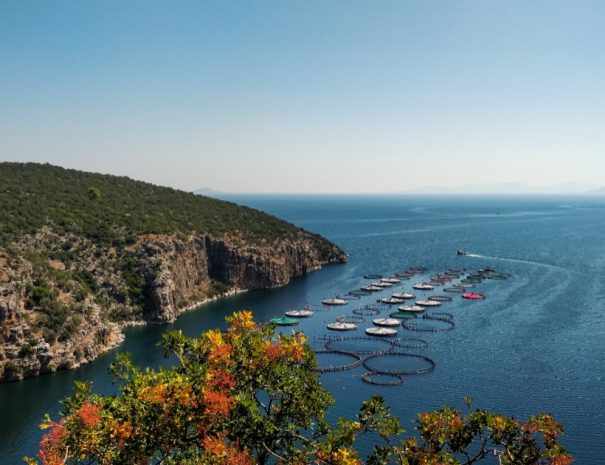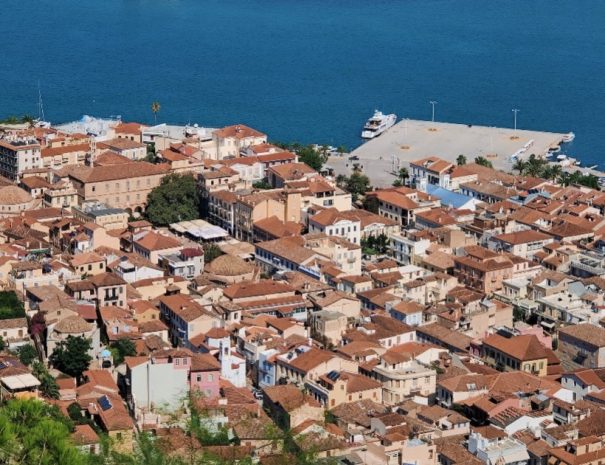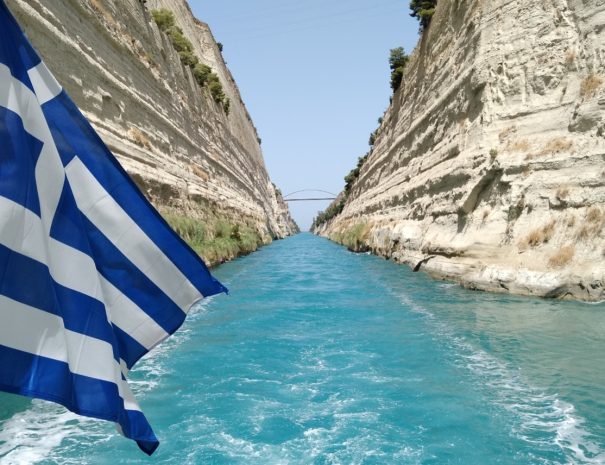Full-day private trip to Mycenae, Epidaurus, and Nafplio from Athens.
Explore the archaeology and mythology of ancient Greece on a private full-day trip from Athens.
Tour overview
Nafplio tour, embark on a private full-day trip from Athens to explore the archaeology and mythology of ancient Greece. You will be picked up from your accommodation and taken to visit the archaeological sites of Epidaurus, Mycenae, and Nafplio, where you’ll have the opportunity to discover breathtaking rural landscapes, ancient ruins, and 4th-century amphitheaters. Your guide will provide you with insightful information about fabled kings such as King Agamemnon, giving you a deeper understanding of the history and mythology of these ancient sites.
- Visit Epidaurus, Mycenae, and Nafplio in a single day from Athens.
- Your guide brings ancient Greece to life.
- Explore 4th-century amphitheaters and picturesque rural settings.
- Round-trip transportation from your Athens accommodation is hassle-free.




Tour itinerary
Corinth Canal
The Corinth Canal connects the Ionian Sea’s Gulf of Corinth with the Aegean Sea’s Saronic Gulf. It runs through the narrow Corinthian Isthmus and divides the Peloponnese from the Greek mainland, making the peninsula an island. The canal was excavated at sea level through the isthmus and had no locks. It is 6.4 kilometers (4 miles) long and just 21.4 meters (70 feet) broad at its base, making it inaccessible to many modern ships. From a high vantage point, you may enjoy the greatest view of Corinth’s isthmus and see the sheer limestone walls while watching the vessels below maneuver along the canal.
Mycenae:
The fortified citadel of ancient Mycenae, home of the legendary and powerful King Agamemnon. Mycenae, an amazing and well-preserved landmark, gave its name to a whole civilization. Admire the Tomb of Clytemnestra, the notorious Lion’s Gate, and the Cyclopean walls while learning about their bloody history. Mycenae was a prominent seat of Greek culture in the second millennium BC, a military stronghold that governed most of southern Greece, Crete, the Cyclades, and sections of southwest Anatolia. In honor of Mycenae, the period of Greek history from around 1600 BC to roughly 1100 BC is known as the Mycenaean. The fortress and lower town had a population of 30,000 and an area of 32 hectares at its height in 1350 BC.
Archaeological Site Mycenae
Mycenae’s archaeological site consists of the fortified acropolis and associated funerary and dwelling complexes, which are mostly located to the west and southwest. The majority of the extant monuments originate from the center’s great floruit, which lasted from 1350 to 1200 BC. Great Cyclopean walls encircle the approximately triangular acropolis, which is approached from the northwest by the famed Lion Gate, a symbol of the strength of the Mycenaean emperors. The gate was called for the two opposing lions carved in relief and placed into the relieving triangle over the entry, a common element of Mycenaean architecture.
Lion Gate: The Lion Gate was the principal gateway to the Bronze Age fortification of Mycenae in southern Greece. It was built in the 13th century BC, circa 1250 BC, on the northwest side of the Acropolis and is named for the relief sculpture of two lionesses or lions in a heraldic posture that rises over the entrance. The Lion Gate is the only surviving monumental work of Mycenaean art, as well as the biggest sculpture in the ancient Aegean. It is the only Bronze Age Greek monument with an iconographic motif that has survived without being buried underground, as well as the only relief image that has been documented in ancient antiquity literature, therefore it was well known prior to contemporary archaeology.
Archaeological Museum of Ancient Mycenae
The Mycenae Archaeological Museum is located near the entrance to the ancient site, only a few feet before the Lion Gate.
Citadel and Treasury of Atreus
The Treasury of Atreus, also known as the Tomb of Agamemnon, is a massive tholos or beehive tomb on Panagitsa Hill in Mycenae built circa 1250 BC during the Bronze Age. The stone lintel above the entryway weighs 120 tons and is around 8.3 x 5.2 x 1.2m, making it the biggest in the world. The tomb was in use for an unknown amount of time. It was mentioned by the Roman geographer Pausanias in the 2nd century AD, and it was still visible in 1879 when the German archaeologist Heinrich Schliemann found the shaft burials beneath the “agora” at the Acropolis at Mycenae.
Epidaurus Archaeological Museum
The Archaeological Museum of Epidaurus is a museum in Epidaurus, Argolis, on Greece’s Peloponnese peninsula. The museum, known for its temple reconstructions, columns, and inscriptions, was founded in 1902 and inaugurated in 1909 to show objects discovered in the surrounding region of the ancient site of Epidaurus.
The Ancient Theatre of Epidaurus
The Ancient Theatre of Epidaurus is a theatre in the Greek city of Epidaurus, located on the southeast end of a sanctuary devoted to Asclepius, the ancient Greek God of healing. It is located on the west side of Cynortion Mountain, near contemporary Lygourio, and is part of the Municipality of Epidaurus. In terms of acoustics and aesthetics, it is regarded as the most ideal ancient Greek theatre. The monument maintains the typical three-part construction of a Hellenistic theater, which includes a theatre, orchestra, and scene. The theatre did not undergo any changes during Roman times, unlike many Greek theatres.
Sanctuary of Asklepios: The Temple of Asclepius was a shrine at Epidaurus dedicated to Asclepius. It was Asclepius’ primary sacred location. The sanctuary at Epidaurus competed with important worship sites like as the Sanctuary of Zeus at Olympia and Apollo at Delphi. The temple was erected in the early fourth century BC. If it was still in use in the 4th century AD, it would have been closed during the persecution of pagans in the late Roman Empire, when Christian Emperors issued edicts outlawing non-Christian worship.
Nafplio
Free time for lunch, coffee, or shopping in the ‘Naples of the East,’ rich in Venetian architecture, cobblestone squares, and towering castles with commanding views of the Argolic Gulf. After that, unwind by the harbor or get lost in the colorful back alleyways of mainland Greece’s most beautiful town. Nafplio is a seaside town in Greece’s Peloponnese that has grown up the hillsides around the north end of the Argolic Gulf. In the Middle Ages, the town was an important seaport ruled by a succession of royal houses as part of the lordship of Argos and Nauplia, originally by the de la Roche following the Fourth Crusade before coming under the Republic of Venice and, finally, the Ottoman Empire. From the beginning of the Greek Revolution in 1821 until 1834, the town served as the capital of the First Hellenic Republic and the Kingdom of Greece. Nafplio is presently the regional capital of Argolis.
Bourtzi
Take amazing shots from the harbor side of the water castle of Bourtzi, a Venetian fortress located in the center of Nafplio’s Bay.
Akronafplia Fortress:The Acronauplia is the oldest section of the Greek city of Nafplion. It was an independent town until the twelfth century. The arrival of the Venetians and Franks converted it into a section of the town’s defenses. Later, part of it was utilized as a jail until the Greek government thought that the view given by its location would assist local tourism and erected a hotel complex that remains today.
Palamidi Castle
Palamidi is a fortification located east of the Acronauplia in the town of Nafplio, Peloponnese, Greece. The Venetians erected the castle on the summit of a 216-metre-high hill during their second control of the region (1686-1715). The fortification boasts a commanding view of the Argolic Gulf, the city of Náfplio, and the surrounding countryside. The twisting stairway from the town to the fortification has 913 steps. However, there are over a thousand stairs to the top of the stronghold, whereas people in Nafplion believe there are 999 steps to the top of the castle.
Includes:
- Professional drivers with extensive historical knowledge (not licensed to accompany you to any place).
- Lunch (with the choice of Greek traditional food).
- Pickup and drop-off at hotels, airports, and ports.
- Private transportation is available.
- A vehicle with air conditioning.
- WiFi is available on board.
- Water in a bottle.
Excludes:
- Tour guide (upon request and subject to availability).
- Archaeological sites have entry or entrance fees.
- Gratuities.
Testimonials
Our guide was an expert on every site we made throughout the day, as well as anything you could want to know about Ancient Greek history. We saw everything on the list that day, plus a detour to Nafplion for a fantastic Greek lunch. We were fortunate to have a guide who was quite informed about the areas we saw. Overall, it was a fantastic day that was well worth our time. This is the tour to do if you want to get out of Athens and do something different. Greg, thank you for a lovely and unforgettable day.
Sottoway
Mirabel
Petros (Peter) was a fantastic tour leader. He was on time, attentive, and kept us ahead of the crowds. He performed an excellent job of meeting all of our requirements. He even kept our adolescent son entertained. I can’t say enough great things about Petros. I wholeheartedly endorse him and the tour.
Saxton
Jim
Tour highlights
- You must cancel at least 24 hours before the start time of the activity to get a complete refund.
- If you cancel less than 24 hours before the start time of the experience, you will not be reimbursed.
- Any modifications made less than 24 hours before the start time of the experience will not be allowed.
- The cut-off times are determined by the experience's local time.
Important details
Point of convergence:
Pickup details:This is a private tour. Only your group will take part. The pick-up time can be adjusted at your request. Your driver will pick you up and return you to the same location or point of preference. In the case of a hotel, he will be waiting for you in the lobby. In the event of an apartment, he will meet you at the building’s entrance. For airport pickup, he will be waiting for you in the arrival hall, holding a sign with your name on it. We will monitor your flight and ensure that our driver arrives on time. For port pickup, he will be waiting for you at the gate, right as you disembark, with a sign with your name on it so you can find him when you arrive.
Before you go, be aware of the following:
- When you book, you will receive confirmation.
- Wheelchair access is not available.
- Close to public transit.
- Infants must sit on their parents' lap.
- There are infant seats available.
- The majority of passengers can participate.
- Although our drivers are not certified tour guides, they are informed and can give entertaining commentary in English. Although they will not accompany you to the archeological sites, they will be able to answer all of your questions about the places you will see on your trip.
- Third-party activities, particularly extreme sports, are not permitted throughout the trip. This might result in the tour being canceled immediately.
- This is an exclusive tour/activity. Only your group will be present.
